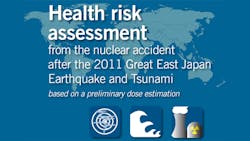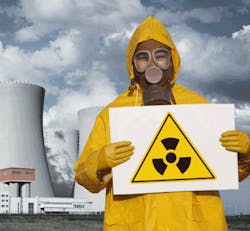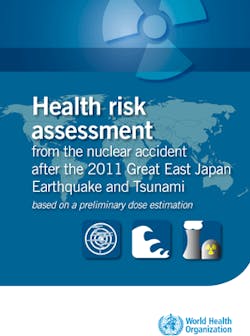One-Third of Fukushima Emergency Workers May Have Increased Cancer Risk
For the general population both inside and outside of Japan, however, WHO reported no observable or anticipated increase in cancer risk.
“The primary concern identified in this report is related to specific cancer risks linked to particular locations and demographic factors,” says Dr. Maria Neira, WHO Director for Public Health and Environment. “A breakdown of data, based on age, gender and proximity to the nuclear plant, does show a higher cancer risk for those located in the most contaminated parts. Outside these parts – even in locations inside Fukushima Prefecture – no observable increases in cancer incidence are expected.”
Radiation Exposure Among Workers
According to the report, around two-thirds of emergency workers who were inside the nuclear plant are estimated to have cancer risks in line with the general population, while one-third is estimated to have an increased risk. Workers may have been exposed to radiation through internal exposure from inhalation of radioactive material in the workplace; external exposure from radioactive material deposited in the workplace; external exposure from radioactive material suspended in the workplace air; external exposure from proximity to radiation sources within the damaged reactors; or external contamination from radioactive material deposited on the skin or clothes.
The assessment of emergency workers was based on the occupational doses estimated by the operator TEPCO. The exposure assessment focused on 23,172 emergency and mitigation workers, including 5,639 TEPCO employees and 17,533 contractors. Other types of workers who may have been exposed to radiation, including firemen, police officers, rescue workers, volunteers and government employees, were not included in the assessment.
“Based on the results of the internal dose estimation, TEPCO concluded that workers with the highest internal doses were those working in a central control room,” the report notes. “Stable iodine tablets were distributed to emergency workers beginning 13 March 2011. So far, no health effects have been observed for workers exceeding the dose limits.”
All estimates of workers’ doses are considered preliminary as data collection and analysis continues.
The Public Risk
For people in the most contaminated location, the estimated increased cancer risks over what would normally be expected are:
- All solid cancers – approximately 4 percent in females exposed as infants;
- Breast cancer – around 6 percent in females exposed as infants;
- Leukemia – around 7 percent in males exposed as infants;
- Thyroid cancer – up to 70 percent in females exposed as infants (the normally expected risk of thyroid cancer in women over lifetime is 0.75 percent, and the additional lifetime risk assessed for females exposed as infants in the most affected location is 0.50 percent).
For people in the second most contaminated location of Fukushima Prefecture, the estimated risks are approximately one-half of those in the location with the highest doses.
“The WHO report underlines the need for long-term health monitoring of those who are at high risk, along with the provision of necessary medical follow-up and support services,” said Dr. Maria Neira, WHO director for public health and environment. “This will remain an important element in the public health response to the disaster for decades.”
The report, “Health Risk Assessment from the nuclear accident after the 2011 Great East Japan Earthquake and Tsunami based on preliminary dose estimation,” is the first-ever analysis of the global health effects due to radiation exposure after the Fukushima NPP accident and is the result of a 2-year, WHO-led process of analysis of estimated doses and their potential health implications. The independent scientific experts came from the fields of radiation risk modeling, epidemiology, dosimetry, radiation effects and public health.
About the Author

Laura Walter
Laura Walter was formerly senior editor of EHS Today. She is a subject matter expert in EHS compliance and government issues and has covered a variety of topics relating to occupational safety and health. Her writing has earned awards from the American Society of Business Publication Editors (ASBPE), the Trade Association Business Publications International (TABPI) and APEX Awards for Publication Excellence. Her debut novel, Body of Stars (Dutton) was published in 2021.


